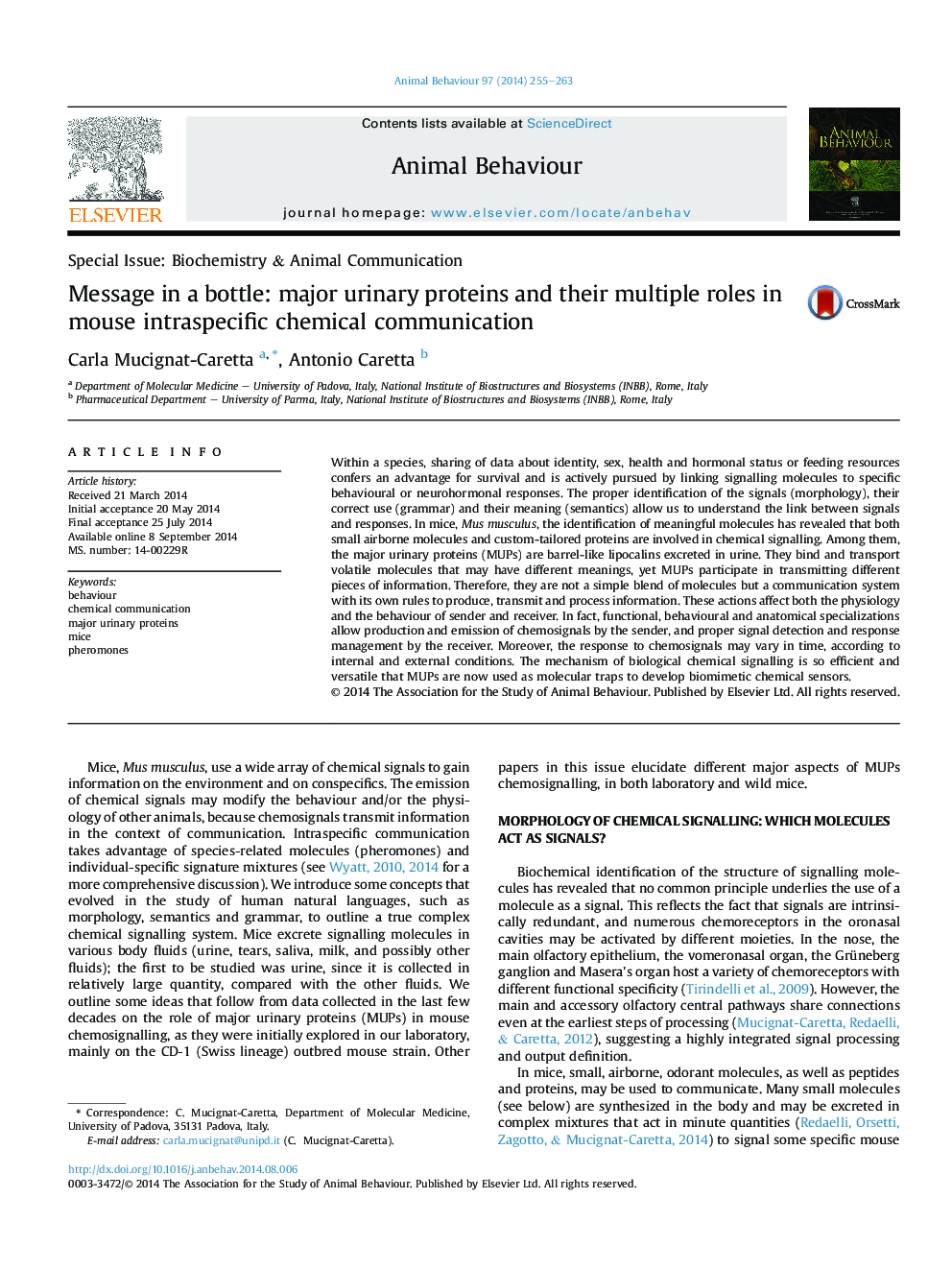| Article ID | Journal | Published Year | Pages | File Type |
|---|---|---|---|---|
| 8490334 | Animal Behaviour | 2014 | 9 Pages |
Abstract
Within a species, sharing of data about identity, sex, health and hormonal status or feeding resources confers an advantage for survival and is actively pursued by linking signalling molecules to specific behavioural or neurohormonal responses. The proper identification of the signals (morphology), their correct use (grammar) and their meaning (semantics) allow us to understand the link between signals and responses. In mice, Mus musculus, the identification of meaningful molecules has revealed that both small airborne molecules and custom-tailored proteins are involved in chemical signalling. Among them, the major urinary proteins (MUPs) are barrel-like lipocalins excreted in urine. They bind and transport volatile molecules that may have different meanings, yet MUPs participate in transmitting different pieces of information. Therefore, they are not a simple blend of molecules but a communication system with its own rules to produce, transmit and process information. These actions affect both the physiology and the behaviour of sender and receiver. In fact, functional, behavioural and anatomical specializations allow production and emission of chemosignals by the sender, and proper signal detection and response management by the receiver. Moreover, the response to chemosignals may vary in time, according to internal and external conditions. The mechanism of biological chemical signalling is so efficient and versatile that MUPs are now used as molecular traps to develop biomimetic chemical sensors.
Related Topics
Life Sciences
Agricultural and Biological Sciences
Animal Science and Zoology
Authors
Carla Mucignat-Caretta, Antonio Caretta,
